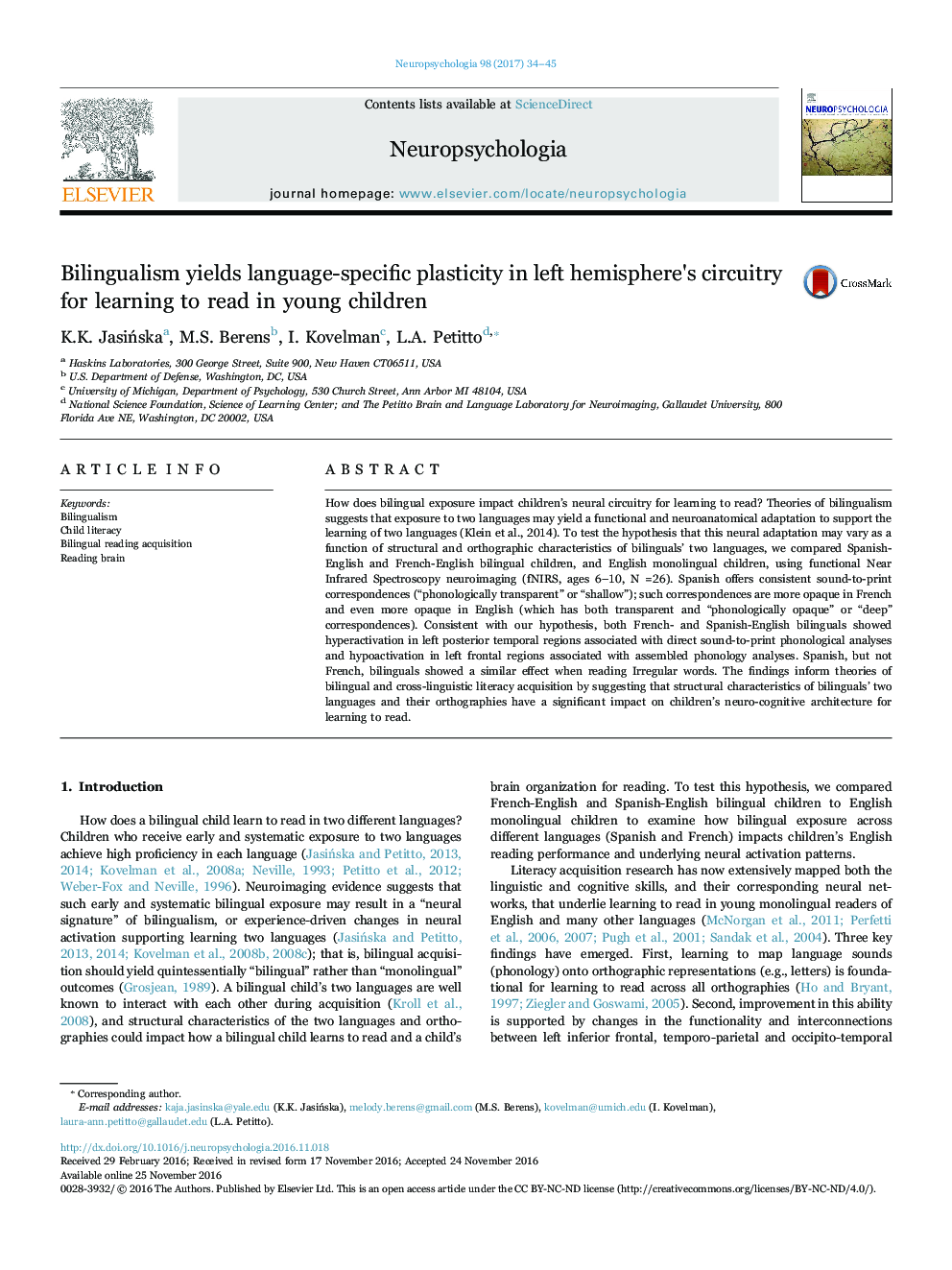| کد مقاله | کد نشریه | سال انتشار | مقاله انگلیسی | نسخه تمام متن |
|---|---|---|---|---|
| 5045269 | 1475557 | 2017 | 12 صفحه PDF | دانلود رایگان |
- What is the impact of bilingualism on children's emergent brain bases for reading?
- French-English, Spanish-English, and English speakers read words during neuroimaging.
- Bilinguals showed orthography-specific plasticity in English in left STG and IFG.
How does bilingual exposure impact children's neural circuitry for learning to read? Theories of bilingualism suggests that exposure to two languages may yield a functional and neuroanatomical adaptation to support the learning of two languages (Klein et al., 2014). To test the hypothesis that this neural adaptation may vary as a function of structural and orthographic characteristics of bilinguals' two languages, we compared Spanish-English and French-English bilingual children, and English monolingual children, using functional Near Infrared Spectroscopy neuroimaging (fNIRS, ages 6-10, N =26). Spanish offers consistent sound-to-print correspondences (“phonologically transparent” or “shallow”); such correspondences are more opaque in French and even more opaque in English (which has both transparent and “phonologically opaque” or “deep” correspondences). Consistent with our hypothesis, both French- and Spanish-English bilinguals showed hyperactivation in left posterior temporal regions associated with direct sound-to-print phonological analyses and hypoactivation in left frontal regions associated with assembled phonology analyses. Spanish, but not French, bilinguals showed a similar effect when reading Irregular words. The findings inform theories of bilingual and cross-linguistic literacy acquisition by suggesting that structural characteristics of bilinguals' two languages and their orthographies have a significant impact on children's neuro-cognitive architecture for learning to read.
Journal: Neuropsychologia - Volume 98, April 2017, Pages 34-45
